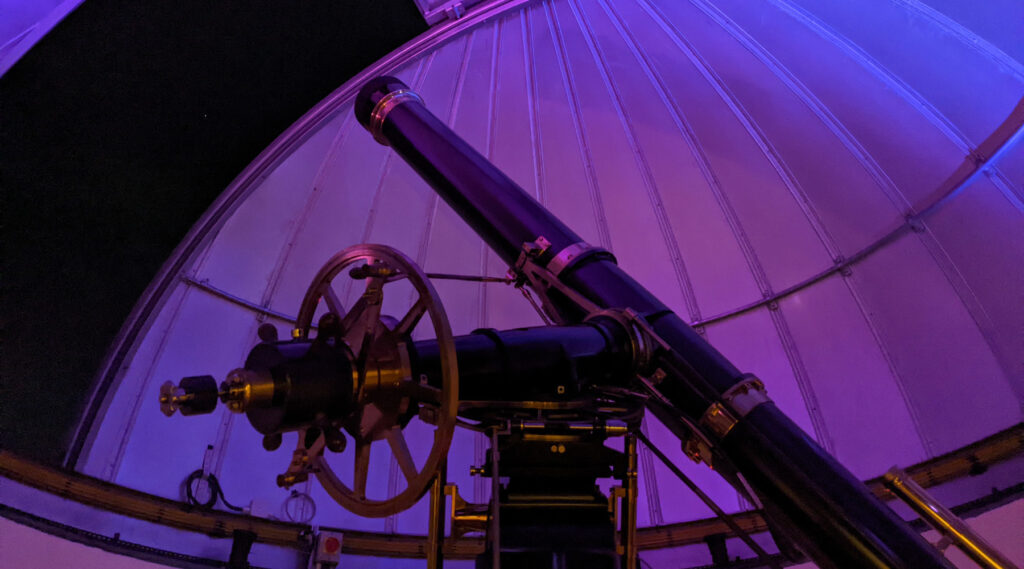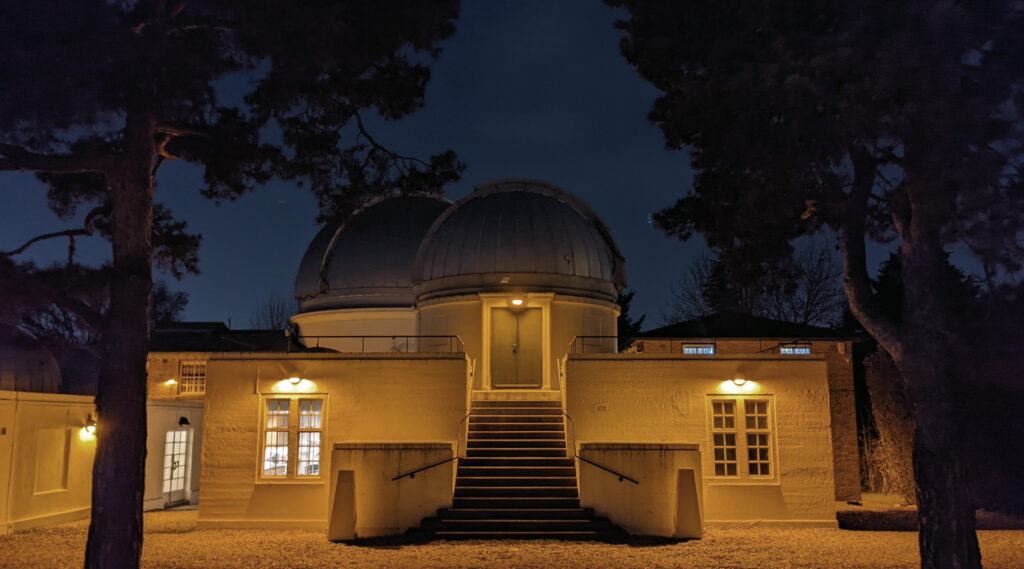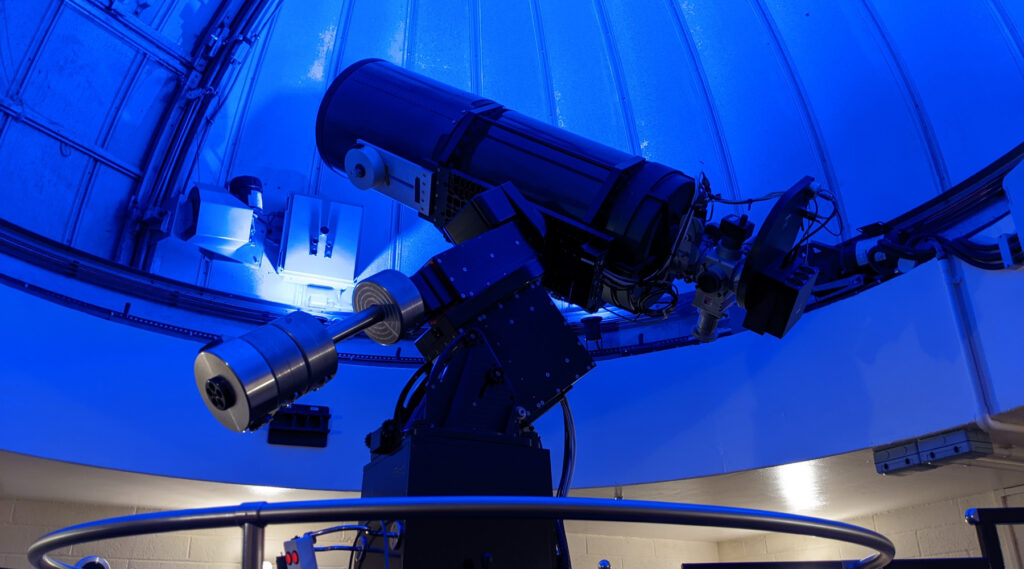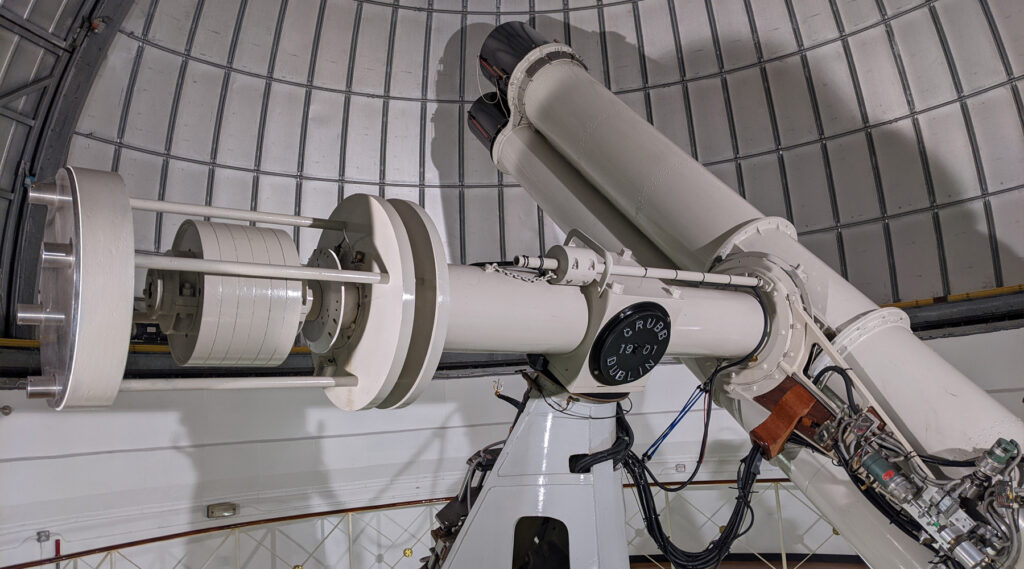In north London is a fully functioning set of science discovering telescopes, and they offer tours to the public who fancy a chance to peer through them.
It might seem odd to have a set of telescopes carrying out science in London, with all the urban light glare we have, and maybe even odder when you consider that it sits next to a major road with street lamps all over the place.
But in fact, the location is both not as bad as you might think for star gazing, and in fact very good for the observatory’s main function — to be an educational facility for University College London (UCL). Most of their students spend the day in UCL’s campus in central London, so having a set of working telescopes a 20 minute train ride away is a very useful asset. Put the telescopes further out of London, and it makes it less convenient for students to visit.
The location is also not that bad for star gazing.
Despite the main road outside, there are still a lot of fields around the observatory most of the area is quite low-rise property, and the street lamps have extra shades to reduce glare, so if your telescope is above the main street light level, you can do some decent observing.
And they do more than decent observing here, it’s a place where discoveries are made, such as a supernova in 2014, and exoplanets.
As the Observatory is a teaching and research establishment, not a tourist attraction it is not generally open to visitors, except on special tours that take place during the winter months.
A tour that starts at a locked gate on a busy main road waiting to be let in, followed by a brief history of the site and how the donation of a large telescope got the site started. Regular glances out of the window to check the skies are clear, and off for what people are really here for, to see the telescopes, and on clear nights, peer through them.
They have four telescopes, and, if the skies are clear, you can have a look through the 8″ Fry Telescope. On my visit they managed to set up a very clear view of a pair of binary stars, and even just holding a smartphone up to the screen got a modestly decent photo.
Next is to have a look at one of the two 14″ Celestron telescopes, which also require a digital camera that’s cooled to a bone chilling -20 Celcius to reduce thermal disturbance in the digital camera sensor.
In the older days, the astrophysicist would lay down on a chair to look through the telescope, but as the end of the telescope changes depending on what’s being looked at, the entire floor of the observatory can be raised and lowered to the correct height. It is more sensible to move the human than the telescope.
There’s also a chance to see the huge Radcliffe telescope, which is used these days to hunt for exoplanets and still has the old lounging sofa used by astronomers to lay back and peer through the eyepiece. They tend to use a digital screen these days though.
Overall, the tours are a fascinating place to visit for both the big science machines and for fans of astronomy.
That it’s all happening in London, next to a busy road is quite remarkable.
Tours are free, with donations appreciated and a cash-only gift shop at the end of the tour. You can book your night with the stars here. Please read the FAQs on the booking page before booking a ticket, as they’re quite important.
Getting to UCL Observatory
The easiest way is to catch the train to Mill Hill Broadway station on the Thameslink service, then a short walk up The Broadway shopping street to Hartley Avenue and walk to the end past the fire station and turn right onto Watford Way. The observatory is about a five minute walk from there.
Alternatively, buses stop outside the observatory, on route 113, but note that while the buses stop outside the observatory northbound, the southbound buses are on the other side of the very busy Watford Way, so you’ll need to use the subway under the road to cross.











I have grappled with this for some time and am thinking maybe you or someone at the observatory can help!!
How is it that, in daylight, some celestial objects invisible to the naked can be clearly seen through a binoculas or telescope.
The problem I have is understanding why the ratio between the brightness of the object and the background light appears to be larger when viewed through an optical magnifier. Its a bit like improving the signal to noise ratio of a signal – but why?
Thanks
Hugh Levinson
Best to contact the Observatory and ask them.
Will there be more tickets available?
Will there be any more dates or can visits be arranged independently?
Thanks.